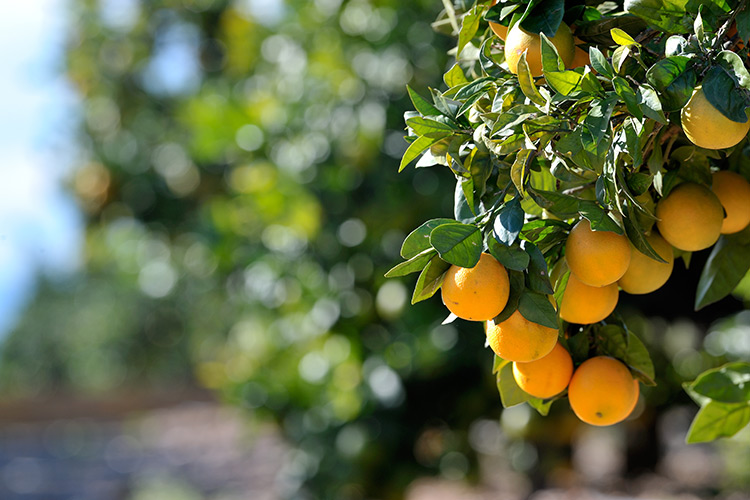Getting Started With Citrus: Purchasing and Placing Your Citrus Trees

by C. Darren Butler with Ann Clary
While the hot summers in Inland Southern California and other similar inland Mediterranean areas can be unpleasant and may make gardening and landscaping difficult, they also ideal areas for growing sweet citrus. Learning how to purchase and place citrus trees are important for the long-term health and productivity of your citrus tree(s).
To get started, obtain a healthy young tree of an appropriate variety, one with good stem structure, from a reputable nursery or other local source. Once established, an orange tree is fairly simple to maintain, and can provide decades of healthy, nutritious, and delicious fruit.
Many grocery shoppers are fussy when purchasing a few dollars worth of fruit to eat, and refuse to be put out or inconvenienced by any blemish, but they may buy and plant whatever fruit trees are sold locally at the big-box nursery without a second thought, and afford the cost and spend the time to maintain them, sometimes for years before harvesting, without even knowing if they will like the taste of the fruit. GardenZeus expert Darren Butler recommends that the first step in planting any variety of fruit tree be trying out and tasting its fruit. This requires planning ahead to taste fruits when seasonally available throughout the year, and can be done by asking around at local farmers’ markets for a vendor who sells fruit of the variety that interests you, placing calls to local citrus societies or California Rare Fruit Growers chapters, or placing online orders. The time and resources you spend to rule out fruit varieties that you might have planted but whose taste does not thrill you, or worse, that you don’t even like, may be some of the best you ever spend, and can save you disappointment and wasted effort and expense after years of nurturing a young tree.
Consider your long-term landscape needs when preparing to plant citrus trees. Evaluate your available space and how your needs for that space may change over years. Plan for irrigation, soil amending or fertilizing, mulching, care during establishment, and long-term care of trees before purchasing.
Citrus can be kept small with regular, reasonably skilled pruning. Some varieties on standard rootstocks grow to 25 feet or more. Semi-dwarf trees generally grow 12 to 18 feet in height, and dwarf trees generally reach 5 to 12 feet in height.
With the right varietal combinations, it’s possible to harvest fresh oranges nearly year-round in many areas of California.
GardenZeus generally recommends planting younger, smaller trees rather than older trees that may have root issues after spending long periods being successively rootbound in multiple nursery pots or containers.
Careful selection of both varieties and individual trees, proper site placement, proper planting, and care of citrus trees for the first 2 or 3 years or until established are all important for the long-term health and productivity of your citrus tree(s). Attention in these areas will often help citrus trees to produce fruit for decades with minimal maintenance and relatively few problems.
In the first 2 to 4 years of a young citrus tree’s life after planting, it’s important to encourage a strong tree with a healthy root system and large canopy before putting attention onto fruiting. Soil fertility and irrigation for young orange trees are critical to healthy development.
Don’t know your GardenZeus climate zone? Click here.
Other articles of interest:
Tips for Managing Fallow Garden Beds and Containers